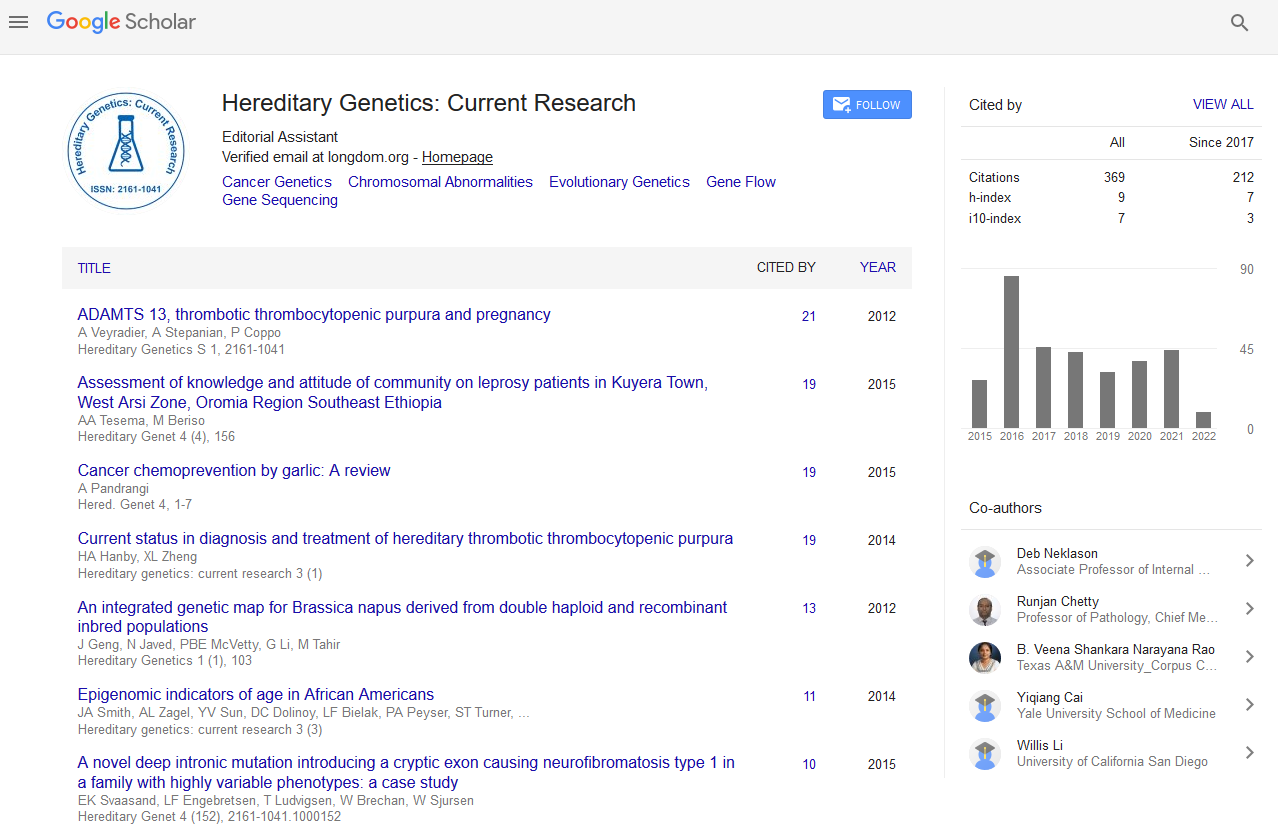PMC/PubMed Indexed Articles
Indexed In
- Open J Gate
- Genamics JournalSeek
- CiteFactor
- RefSeek
- Hamdard University
- EBSCO A-Z
- NSD - Norwegian Centre for Research Data
- OCLC- WorldCat
- Publons
- Geneva Foundation for Medical Education and Research
- Euro Pub
- Google Scholar
Useful Links
Share This Page
Journal Flyer

Open Access Journals
- Agri and Aquaculture
- Biochemistry
- Bioinformatics & Systems Biology
- Business & Management
- Chemistry
- Clinical Sciences
- Engineering
- Food & Nutrition
- General Science
- Genetics & Molecular Biology
- Immunology & Microbiology
- Medical Sciences
- Neuroscience & Psychology
- Nursing & Health Care
- Pharmaceutical Sciences
Abstract
Phyto-Medicine in Gene(s) Targeting Future Direction for Sickle Cell Disease Management
Lukman A. Alli and Michael P. Okoh
Sickle cell disease (SCD) is a genetic disease of hemoglobin (Hb) that occurs due to a non- conservative substitution of a polar glutamate (Glu) by non-polar valine (Val) in an invariant region, of hemoglobin β chain-subunit. This change distorts the normal Hb folding resulting in a sticky patch on the surface of the β-chains and associated complications. Nigeria has the largest burden of SCD globally with an estimated 150,000 new born affected annually. This review is aimed at analyzing the phytomedicines use in Nigeria to ameliorate the crisis associated with SCD and present probable target genetic loci/pathways that this phytomedicines could act upon for effective and enhanced management of SCD in a resource poor environment. Nucleation is essential in polymerization of Hb and phyto-medicine has been reported to inhibit this pathway. Different loci of genetic variation identified as modulator of SCD phenotype include nucleotide motifs within the β- globin gene cluster and distal genes located on different chromosomes. Fetal hemoglobin (HbF) is equally an important variable and modulator of the clinical features of SCD. Phytomedicine used in the management of SCD ameliorates oxidative stress and modulates cytokines that contributes to SCD complications. Here, we propose the use of phyto-medicine as key component for genetic modification, by twinkling, some transcription effectors/gene modulator such as B-cell lymphoma/leukemia 11A (BCL11A), or an erythroid specific transcription factor (KLF1), which are part of factors mediating HbF gene silencing.


